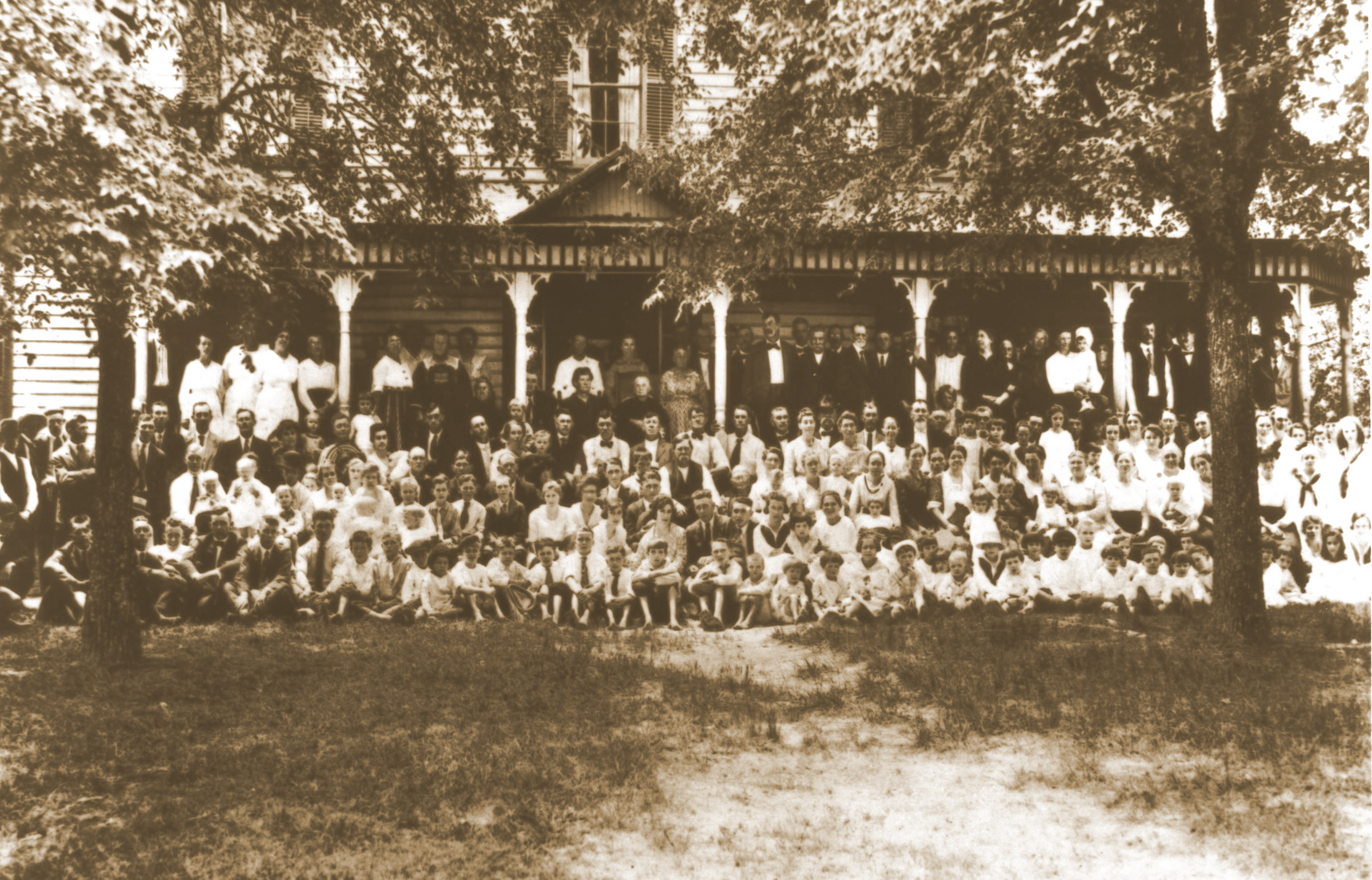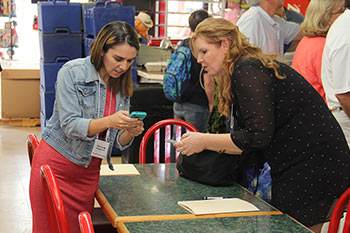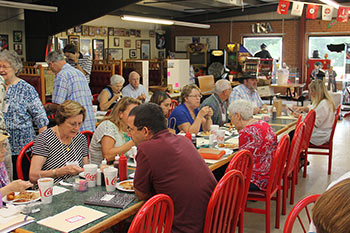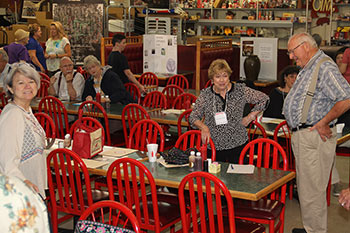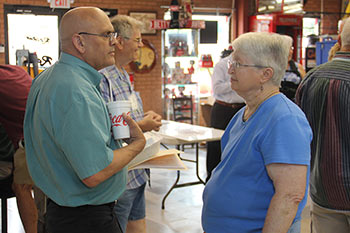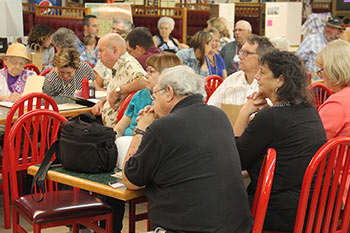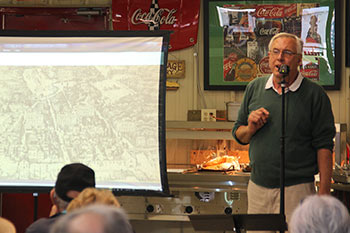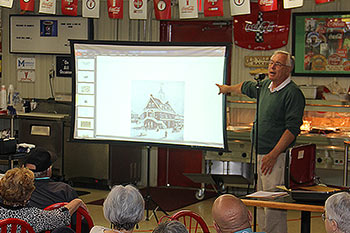CHAPTER 1
EARLY LIPPARD GENEALOGY
For many, many centuries in Europe, life for many was farming or otherwise gleaning from the land a subsistence existence. However, the land people lived on did not belong to individuals. The king or ruler of the area (feudal lord) claimed all of the land to belong to him with some small portions belonging to the ruler's trusted assistants such as princes. The common man had no hope of individual ownership of a plot of land of his own. However, even as early as the medieval period and before, not all in Europe were farmers or aspired to be. There were many tradesmen and craftsmen who worked at such jobs as millers, brick makers and stone masons, distillers, carpenters, shoemakers, bakers, weavers, glass makers, ceramic craftsmen, and those of many other trades. Many of them aspired to go to a new place to continue to earn a living in these and various other crafts and industries and still acquire enough land to grow some crops and vegetables as well as raise some livestock for their own use uncontrolled by some local lord.
With the opening up of America, life began to change. As kings began to delegate portions of agricultural land in America to their trusted subordinates, individuals who could afford it were able to purchase plots of ground that they could call their own. Others could set up their own independent shops or businesses without being under the thumb of the local rulers. This was the hope and dream of the thousands of European emigrants who swarmed to the colonies. Many were successful and for the first time acquired the ability to subsist on their own farms or in their own trades. Unfortunately, by the time our Lippard ancestors reached Pennsylvania, the available, affordable land, mostly safe from the attacks of the native Indians, had been bought up so that if they chose to be dependent on farming, all our Conrad and his son Wilhelm could do was rent a plot of ground from which to eke out a living. Thus, Conrad died still unsuccessful as a land owner, but it is my theory that Conrad was not particularly invested in agriculture, which I will explain more thoroughly a little further on. On the other hand, Wilhelm apparently was and eagerly heard of the opportunity of less expensive, available land to the south in Maryland, Virginia, and North Carolina. It was in the south that our ancestor, Wilhelm Lippard, finally achieved the goal of individual land ownership and moved out of the feudal system in which all of the land belonged to a mighty ruler.
OUR FAMILY NAME
Liphardt
The name "Liphardt" is an old Hessian clan.
The origin of the name should be credited to Professor Dr. Rudolf Zoder based on documentary sources from the first name Lindbrecht to be modified, Lippert until today's spelling formed. In addition to the Gundelach, Goebel, and Becker families, the Liphardts were important glassmakers, potters, and crucible makers. Records show that Liphardts lived in Epterode between 1589 and 1598. In the listings of 1598 and 1605 under Burhenn, Hillebrandt Liphardt [also Liphart] is the progenitor/forefather of the Liphardt Families in Epterode. His son was Marten Liphardt, who married Anna Cham (Agnesen the Krämerschen daughter) on 08.09.1657 after the death of his first wife not known by name. Both marriages produced 11 children. Liphards also lived especially in Wickenrode, Grossalmerode, and Kassel in Hesse.
But there are earlier records showing the family name in a variety of forms as being from ancient Bavaria. Originally Leiprecht and Leuprecht, originated from the old German word "Liutberht," which meant shining or holy people. In Swabia St, Luitpert was the patron saint of farmers. The oldest recorded record of the name was in 1345 of a Hans Lueprecht of Leutkirch, which is in Baden Wurtemburg.
In our family we do have a variety of spellings and pronunciations used by different branches of our family. This is not unusual for a name to be changed when a family immigrates to another country. For example, in my family one branch, the Steigerwalts, changed the spelling of their name to Stirewalt. Another branch translated the German name Klein to its English equivalent, Little. Historically, spelling was not considered to be particularly significant.
My husband, Norbert Schroeder, has traveled extensively in Europe and has worked with many people from Germany. Based on our supposition that the Lippards came from Germany, he asked the Germans he met who were delegates as he was to European conferences at the United Nations in Geneva, Switzerland, if they were familiar with the Lippard name in Germany. They told him that the name was definitely from the Hessian area and did have a number of variations in spelling and pronunciation. The two most prevalent through earlier history and up to the present are Liphard and Lippert with the former being primarily Protestants and the latter Catholics. They proclaimed that no one in Germany either spelled the name as Lippard/Lippardt, the way Conrad and Wilhelm wrote their names on the 1738 Queen Elizabeth ship's log recorded in historians and genealogists Ralph Beaver Strassburger and William John Hinke's third volume of their Pennsylvania German Pioneers, photocopies of the passengers' original signatures. Additionally, today in Germany the name is pronounced with the accent on the second syllable instead as many American family members pronounce it with the accent on the first syllable.
Why did Conrad and Wilhelm modify the spelling of their names on the ship's log? The law in Germany at the time of their immigration required that potential immigrants obtain permission from their overlords to leave and to obtain a passport. As few overlords were cooperative in giving that permission, immigrants generally ignored that law. Perhaps Conrad and Wilhelm were attempting, if only to a small degree, to disguise their true identities.
In conclusion to this discussion of how to spell and pronounce our surname, my opinion is that every branch of the family has the right to their own preferences. The only thing that is really relevant to our family history and genealogy is that one can trace his or her lineage with documentation from themselves back to Conrad and Wilhelm.
COAT OF ARMS
At several of our reunions the topic, usually in small informal groups, has arisen of whom of those who have a picture of a Lippard coat of arms has the correct one. I decided to look more deeply into this topic because my view was that we do not have an official coat of arms. Just to begin with, the United States does not award coats of arms; furthermore. all the ones cousins were promoting are spelled Lippard, not Liphard as it would have been spelled in Germany. Recently I read a well-documented article by Kimberly Powell entitled "Misconceptions About Family Coats of Arms," Thought Company, July 1, 2019. She states that anyone can on one's own or with the assistance of an artist design a personal "coat of arms" perhaps integrating pictures of objects relevant to one's family history such as in the case of Lippards a leopard, a brick wall, a sailing ship, etc. But unless a coat of arms is hereditary, it has no official or ancestral meaning. The proper heraldic authority for the country in question grants coats of arms to individuals, not to families or to surnames. An official coat of arms can rightfully be claimed only by the uninterrupted male line descendants of the person to whom it was originally awarded. Those to whom coats of arms were usually granted were of the upper class or had performed meritorious service. Our Liphards were, it appears, craftsmen although a few may have become masters of their crafts. Nevertheless, master craftsmen, even those who belonged to guilds, were people of the middle class. Thus, it is not very likely that our family ever had an authentic, heraldic coat of arms.
TYPES OF RESOURCES
As most who have experience in research know, there are two basic types of information sources – primary sources, which are actual historical records such as original ships logs, tombstones, church records, wills, census records, Bible records, first-hand accounts, birth and death certificates, court records, civil records, audio and video tapes, etc.; and secondary sources, which are critical interpretations or evaluations of any of the above, hearsay evidence, texts interpreted from primary sources, opinions, evaluations, etc. Thus, in the example above concerning the various spellings of the name "Lippard," only the photostats of the original ship's logs and copies of Bible records are primary sources. Strassburger and Hinke's interpretations of them are secondary sources. Throughout research of any type, one should find primary sources of relevant information if at all possible, using secondary sources as only possibly accurate information. At the same time, when using secondary texts, one must be certain to consult the original sources as indicated in foot or end notes whenever possible. Even typographical errors can taint secondary sources. Thus, a family history based on original records is the goal of every competent genealogist and historian.
Another example of primary source information comes also from the ships' logs. The log of the Queen Elizabeth refers to its passengers as "Palatinates" while other ships of the period list their passengers not only as Palatinates but also as Alsatians, Swiss, Bavarians, Wurttemburgians, and occasionally Hessians. Most ships carried a combination of these peoples, frequently just listing the origins of those in the majority. Thus, the Germanic folks immigrating to America during the colonial period were emigrating from north and western Switzerland, the Alsace Lorraine area now in France but at this time frequently also under German control, the Hessian area, and the mid to southern and western areas of Germany, primarily along the Rhine River and its tributaries.

